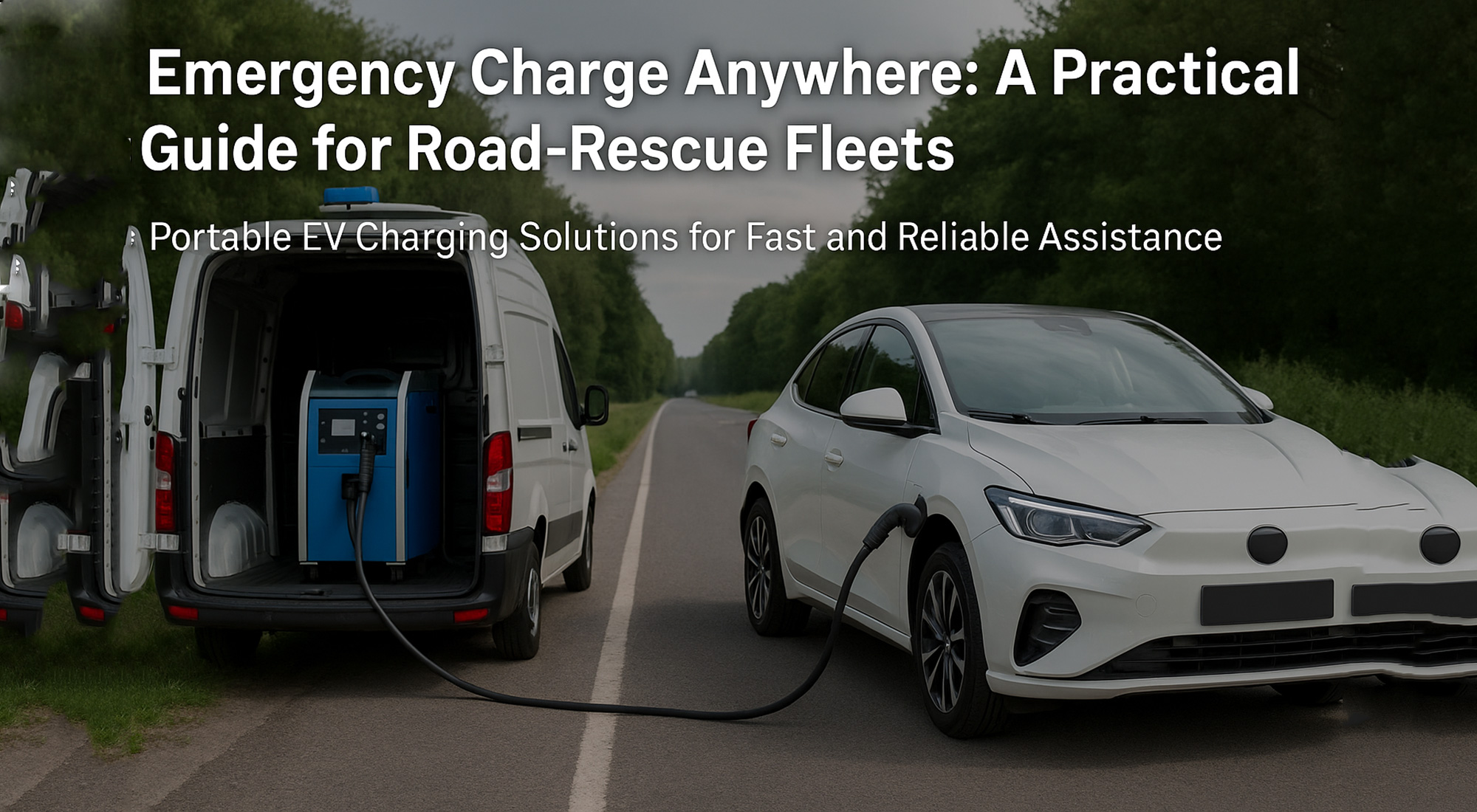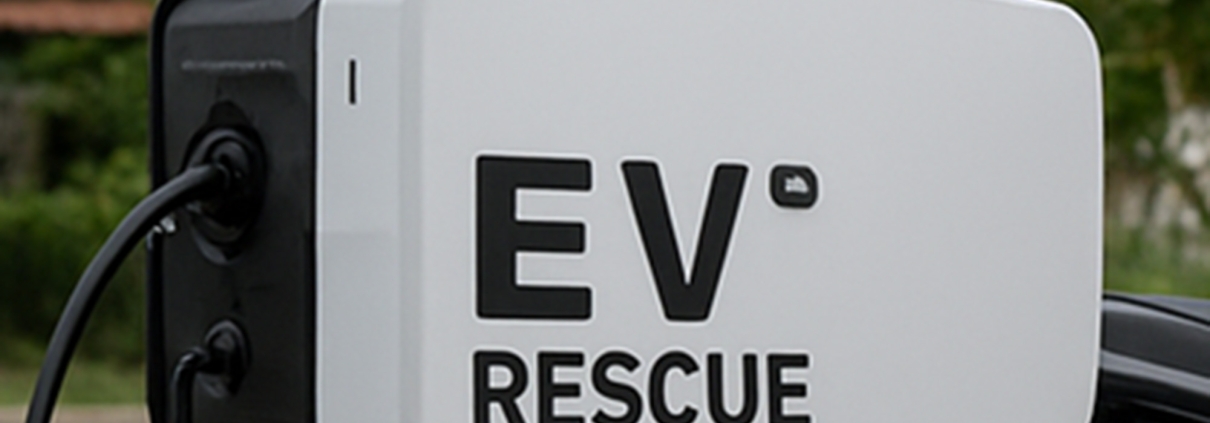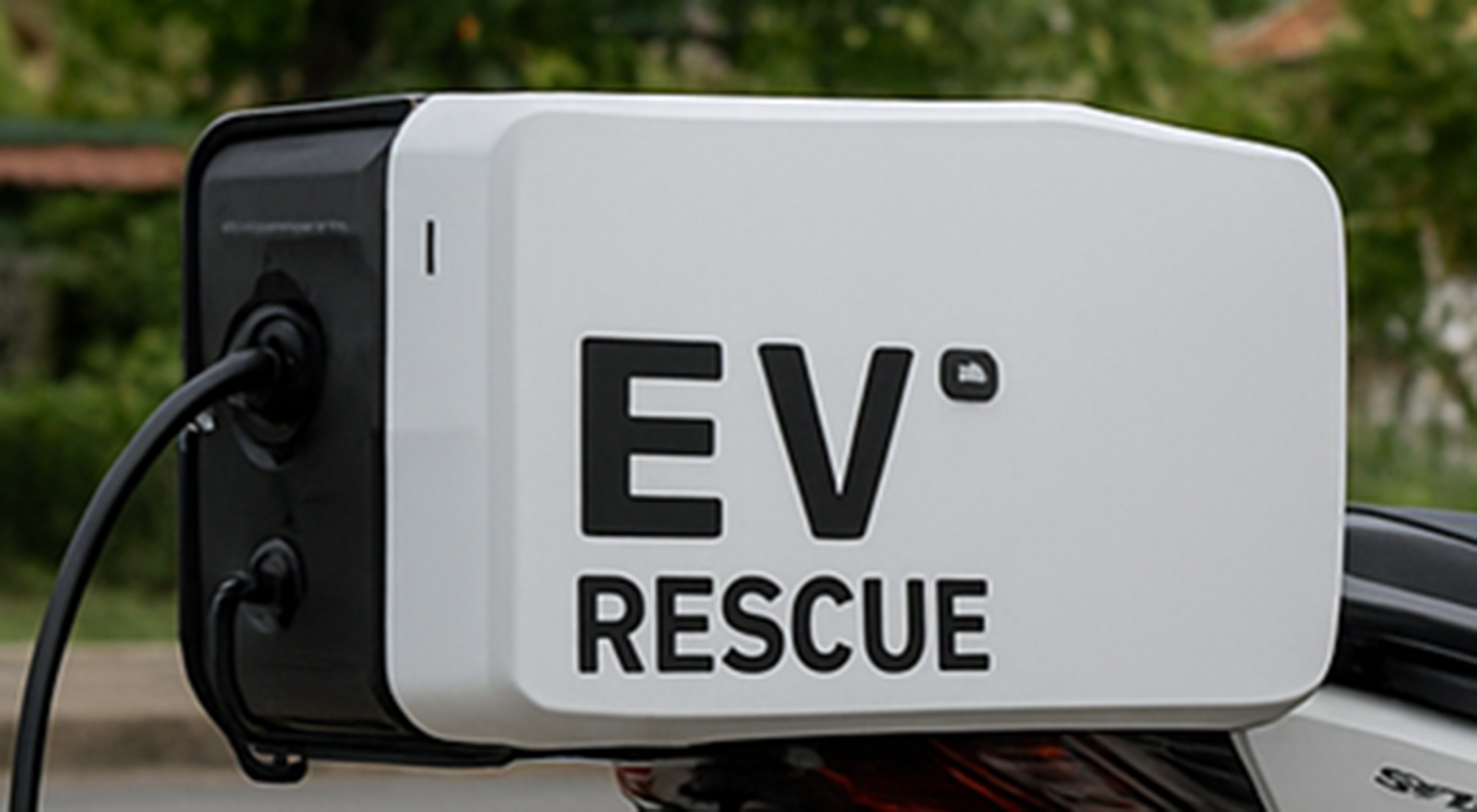Emergency Charge Anywhere: A Practical Guide for Road-Rescue Fleets
🚗 Portable EV Charging Solutions for Fast and Reliable Roadside Assistance
As electric vehicles (EVs) become mainstream, the need for portable EV charging solutions is rapidly increasing. When an EV runs out of power on the road, towing is no longer the only option. PKNERGY provides compact mobile chargers that allow rescue fleets to restore range directly on-site — saving time, cost, and customer satisfaction.
🔍 Understanding the Rescue Need
With EV adoption accelerating globally, incidents involving fully discharged batteries are becoming more common. Traditional tow-then-charge models waste valuable time. Mobile charging units solve this by delivering energy directly to stranded EVs. In just 15–30 minutes, they can restore enough range (20–30 miles) to reach the nearest fixed charger.
🧰 Key Deployment Checklist
- 🚚 Vehicle-mounted unit: Compact, high-output design supporting CCS, CHAdeMO, and Type 2 connectors.
- 👷 Operator training: Staff must understand HV safety, communication, and operation.
- ⚙️ Service workflow: Receive call → Dispatch → Connect → Charge → Confirm mobility.
- 🔋 Energy logistics: Use depot-based recharging and SoC tracking systems.
- 🧯 Safety protocols: Include emergency stop, HV awareness, and connector checks.
- 📊 Data capture: Log kWh delivered, miles restored, and vehicle type for optimization.
⚡ Equipment Selection Factors
Choosing the right portable EV charger is crucial for field efficiency. Consider:
- 🔋 Output power — Higher wattage ensures faster turnaround time.
- 🔌 Connector support — Universal compatibility for diverse EV models.
- 🧱 Internal energy storage — Self-contained units allow true off-grid operation.
- 💻 User interface — Simple, rugged, and intuitive control screen.
- 🛡️ Safety & durability — Emergency stop, IP65+ protection, and robust casing.
🚀 Operational Best Practices
- 📍 Deploy in EV-dense areas for faster response.
- 🔧 Maintain portable units regularly and test under load.
- 📱 Use tracking software to monitor usage and energy levels.
- 🤝 Offer subscription or pay-per-use rescue services.
- 🔋 Communicate expected charge time and range recovery clearly to customers.

💰 Cost-Benefit Insight
Compared to towing, mobile charging is faster and more cost-efficient. It enhances service quality while reducing fleet fuel use. Early adopters of portable energy systems gain ROI through lower operational costs and new premium service offerings.
📊 Case Study Snapshot
An urban rescue fleet equipped with two 50kW mobile chargers:
- ⚙️ 10 rescues per month per van
- 🔋 Each call restores ~15 miles of driving range
- 📈 Over a year: 3,000 EV miles recovered per vehicle
- 💰 Significant cost savings vs. traditional towing
⚠️ Challenges to Anticipate
- 📆 Peak demand management
- 🔌 EV model connector variations
- ⛽ Limited recharging infrastructure
- 📋 Insurance and liability considerations
- 🕓 Downtime coordination between shifts
🏁 The Road Ahead
For roadside rescue fleets, the transition to electric mobility requires new capabilities. A “dead EV” call is no longer about towing — it’s about energy delivery. By deploying portable EV charging systems, operators can offer faster, cleaner, and more profitable services while aligning with future smart mobility trends.
✅ Conclusion
Portable EV chargers represent the next evolution in roadside assistance. Combining compact design, smart energy management, and universal compatibility, PKNERGY’s mobile systems empower fleets to lead in the electric era of mobility.
👉 Contact PKNERGY today to explore your customized portable EV charging solution.
📩 Contact Information
Cassie | PKNERGY Energy Co., Ltd.
Email: sale4@pknergy.com
WhatsApp/Tel: +86 13974604556
🌐 Website: https://pknergypower.com





